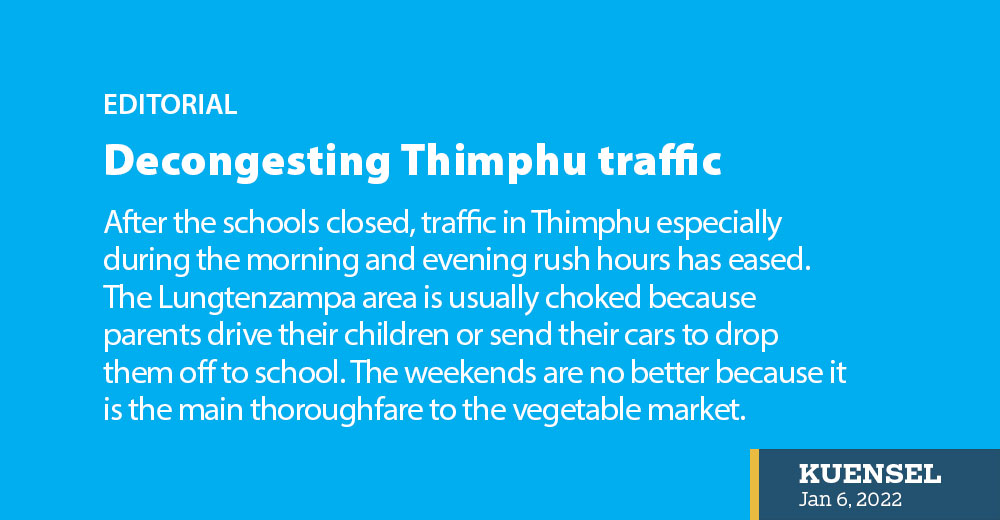After the schools closed, traffic in Thimphu especially during the morning and evening rush hours has eased.
The Lungtenzampa area is usually choked because parents drive their children or send their cars to drop them off to school. The weekends are no better because it is the main thoroughfare to the vegetable market.
This relief, however, is temporary. Come February, schools will reopen and the traffic willbe back, as they do every year, with more students. The capital city has 34 schools with around 17,000 students last year.
The Lungtenzampa bridge reconstruction project, which is now pushed to the 13th Plan and beyond, is unlikely to be completed any time soon. So the traffic problem will be back with a vengeance.
This is a problem which has to be resolved with a long-term view. It will persist and grow, long after the bridge is completed.
If Thimphu’s population is growing fast, the vehicle population is growing even faster. The number of vehicles in Thimphu has grown over the years. Thimphu has 68,435 vehicles as of October 31 last year. This is almost 55 percent of the entire vehicles in the country. It is an increase of almost 6,000 vehicles from 2021.
It is a situation where the suggestion for school buses or car pooling is worthy of some deep thought. A well-organised system of school buses to pick up and drop off students will have numerous advantages.
Besides relieving the traffic, school buses will be cheaper for parents, they would be accessible to a larger number of students, and it would also be safer for students who walk on the same roads to school. With official vehicles used to drop students it would also be cheaper for the government and other organisations.
The education ministry and schools themselves may be apprehensive of the costs, especially if they have to maintain a fleet of buses, but the increasing number of thromde buses or even the private buses could provide a business possibility like it is done in many town and cities around the world.
There will always be a proportion of students being driven to school, but the worsening conditions must reach a point where the student numbers will make such a business viable. If the layout of the town makes door-to-door pick-up not possible, there is always the solution of pick-up points around the town. For a few schools, mostly private, it has proven effective.


